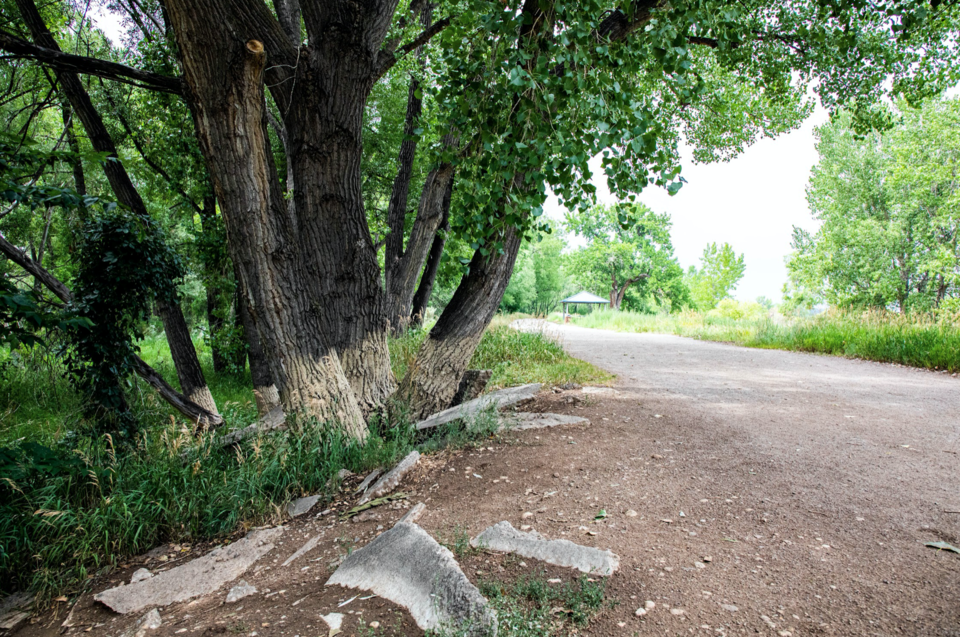Keeping a balanced ecosystem is not always easy, especially as beavers in Longmont gnaw through the outer bark of trees. This year volunteers are joining forces with the city of Longmont to encourage beavers to choose to snack on invasive trees.
The city of Longmont is partnering with Wildlands Restoration Volunteers to hold three “beaver tree painting” events, according to the city of Longmont Facebook page. Each event has space for 25 volunteers who register on the website on a first-come, first-served basis. The last of the volunteer beaver tree painting events will be on September 18.
According to Scott Severs, the natural resources technician for the city of Longmont, a COVID relief grant from Great Outdoors Colorado allowed the city to partner with Wildlands Restoration Volunteers.
Last year, due to COVID-19, the city’s natural resources department lost a lot of staff hours and man power because of hiring freezes, Severs said. This year, the grant has allowed the department to catch up — especially in terms of beaver tree painting.
“(The natural resources department of the city of Longmont) is way ahead of the game now that we’ve been working with Wildlands Restoration Volunteers,” Severs said. “By having the volunteers work with us, we can get a big stretch (of beaver tree painting) done in the morning that would have taken our team almost a whole year to get to. If we did not have the volunteers working on beaver tree painting, we would probably be three or four years behind.”
The beaver tree painting project is primarily located along Saint Vrain Creek in the Golden Ponds and Rogers Grove area. This area in particular has a lot of beaver activity because of the abundance of trees and water, Severs said.
At the events, volunteers concoct a mixture of two and a half pounds of outdoor latex and 25 pounds of play sand then apply the mixture, or paint, to the bottom three feet of native tree trunks along the stream corridor. The point of this practice, said Taylor Gifford, the natural resources volunteer coordinator for the city of Longmont, “is that the beavers don’t necessarily want to gnaw on trees that are covered in gravel, so they will leave the painted trees alone.”
According to Severs, beavers are interested in chewing the outer bark from trees because it is the most nutritious thing for them to eat. However, this outer bark also plays an important role in the nutrient transfer system between the leaves and roots of trees. When beavers eat all of the bark from a tree and only leave the hardwood, Severs said, there is a greater risk of the tree falling.
The objective of the beaver tree painting project is to paint the native trees — Plains Cottonwoods and Peach Leaf Willows — along the stream corridor. Volunteers leave the non-native and young trees for the beavers so they still have a source of food, according to Severs. The trees are painted three feet off the ground so the beavers, even when they stand on their hind legs, cannot reach the bark that’s above the paint.
The paint that volunteers use on the trees, according to Gifford, is not bad for the environment — it’s non-toxic to birds and the bioconcentration of the paint is very low for water-dependent wildlife, she said.
The practice of painting native trees also helps preserve the ecosystem at large.
“We’re trying to protect those particular species because they’re all native to our creek channels,” Severs said, “and the native trees, within themselves, are the most desirable trees for our native birds and insects.”
By keeping the native trees safe from beavers’ consumption, native insect populations like caterpillars and beetles can continue to persist on the trees, which in turn supports native nesting bird populations, according to Severs.
Another population to benefit from native trees growing along the corridor are cold water fish, like trout, according to Severs. “(Native trees) provide shade for the water and if the water temperatures are too hot, we start losing fish.”
Instead of the native trees, Severs said, “we let the beavers work on non-native trees and weedy trees” which crowd out the native trees and threaten to clog the stream corridor.
The general goal of the beaver tree painting project is coexistence, Gifford said. “The idea is we want the beavers here and we like the beavers, but the beavers are living in an urban environment and they’re also living in a sensitive stream corridor, so we’re just trying to manage exactly what is available for them to consume.”
Update/Correction: The spelling of Scott Severs' name has been corrected in the article.



